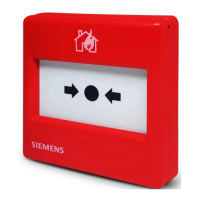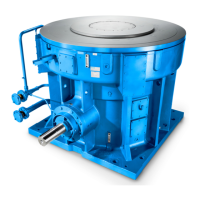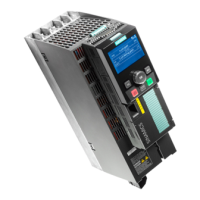Do you have a question about the Siemens fMRI and is the answer not in the manual?
Details licensing information for various software versions and application packages required for fMRI.
Describes the available EPI sequences for BOLD imaging: ep2d_fid, ep2d_bold, and ep2d_pace.
Covers synchronization, motion correction, slice timing, spatial filtering, and co-registration for fMRI acquisition.
Refers to the BOLD Imaging Application brochure for detailed analysis procedures.
Describes the response pad used for registering subject responses to stimuli.
Covers visual stimuli presentation using projectors and LCD screens, including setup.
Details auditory stimulus, eye tracking, and physiological monitoring setups for fMRI studies.
Explains the importance of synchronizing stimuli, subject response, and physiological measurements.
Discusses installation challenges, RF noise, and performing noise tests for peripheral devices.
Explains N/2 ghosting artifacts in EPI sequences and methods to avoid them.
Details distortion artifacts in EPI sequences caused by susceptibility differences and shimming.
Covers spatial shifts in EPI images due to B0 drifts and methods to minimize them.
Describes chemical shift artifacts in EPI sequences and the use of fat suppression.
Outlines a block design experiment using a finger tapping motor task for fMRI setup.
Provides step-by-step instructions for setting up and running an fMRI experiment with a motor task.
Details licensing information for various software versions and application packages required for fMRI.
Describes the available EPI sequences for BOLD imaging: ep2d_fid, ep2d_bold, and ep2d_pace.
Covers synchronization, motion correction, slice timing, spatial filtering, and co-registration for fMRI acquisition.
Refers to the BOLD Imaging Application brochure for detailed analysis procedures.
Describes the response pad used for registering subject responses to stimuli.
Covers visual stimuli presentation using projectors and LCD screens, including setup.
Details auditory stimulus, eye tracking, and physiological monitoring setups for fMRI studies.
Explains the importance of synchronizing stimuli, subject response, and physiological measurements.
Discusses installation challenges, RF noise, and performing noise tests for peripheral devices.
Explains N/2 ghosting artifacts in EPI sequences and methods to avoid them.
Details distortion artifacts in EPI sequences caused by susceptibility differences and shimming.
Covers spatial shifts in EPI images due to B0 drifts and methods to minimize them.
Describes chemical shift artifacts in EPI sequences and the use of fat suppression.
Outlines a block design experiment using a finger tapping motor task for fMRI setup.
Provides step-by-step instructions for setting up and running an fMRI experiment with a motor task.
This document serves as a user guide for fMRI (functional Magnetic Resonance Imaging) studies, focusing on the Siemens system. It provides comprehensive information on the prerequisites, sequences, peripherals, and typical artifacts encountered during fMRI experiments, along with a basic guide for setting up an fMRI study.
fMRI utilizes the BOLD (Blood Oxygenation Level Dependent) effect to detect neuronal activation in the brain. When a brain region becomes active, there's an increase in local blood flow, leading to a higher concentration of oxygenated hemoglobin and a decrease in deoxygenated hemoglobin. Oxygenated hemoglobin is diamagnetic (very small magnetic moment), while deoxygenated hemoglobin is paramagnetic (significant magnetic moment). This change in magnetic properties reduces susceptibility-induced dephasing, thereby increasing the T2* signal of the stimulated tissue. Consequently, on a T2*-weighted image, activated tissue appears brighter than unstimulated tissue. The Siemens fMRI system is designed to acquire and process these BOLD signals to map brain activity.
The system offers various EPI (Echo Planar Imaging) sequences optimized for BOLD imaging. These include ep2d_fid for basic single-shot EPI, ep2d_bold which integrates BOLD imaging card features like paradigm definition, GLM (General Linear Model) analysis, t-test, and spatial filtering, and ep2d_pace which adds prospective motion correction (PACE) to the ep2d_bold features. The ep2d_pace sequence is particularly useful as it retrieves detected motion parameters and adjusts gradients prospectively, meaning future volumes are corrected for detected motion, improving data quality.
The fMRI system also includes capabilities for BOLD 3D Evaluation, featuring a BOLD Evaluation Taskcard for Neuro3D Evaluation with colored overlay representation. It supports both offline and inline fMRI visualization and analysis based on the Neuro3D Taskcard.
ep2d_pace sequence offers prospective motion correction, where detected motion parameters are used to adjust gradients for subsequent volumes. The ep2d_bold sequence provides retrospective motion correction, generating both original and corrected series. Motion parameters are logged and accessible for analysis.| Manufacturer | Siemens |
|---|---|
| Category | Industrial Equipment |
| Magnetic Field Strength | 1.5T / 3T / 7T (depending on the specific model) |
| Gradient Strength | Up to 80 mT/m (depending on the specific model) |
| Slew Rate | 200 T/m/s or higher (model dependent) |
| Imaging Modes | fMRI |
| Software | Siemens Syngo MR (specific version varies by model) |
| Cooling System | Helium-based cooling system |
| Dimensions | Varies by model (typically large, room-sized systems) |
| Weight | Varies significantly depending on the model. Typical weight: 5-10 tons |
| Power Requirements | High-power three-phase supply (specifics vary by model) |











